RACIAL DISPROPORTIONALITY IN CHILD WELFARE
Racial Disproportionality in Child Welfare
Marian S. Harris
 COLUMBIA UNIVERSITY PRESS NEW YORK
COLUMBIA UNIVERSITY PRESS NEW YORKCOLUMBIA UNIVERSITY PRESS
Publishers Since 1893
New York Chichester, West Sussex
cup.columbia.edu
Copyright 2014 Columbia University Press
All rights reserved
EISBN: 978-0-231-52103-1
Library of Congress Cataloging-in-Publication Data
Harris, Marian Sabrina.
Racial disproportionality in child welfare / Marian S. Harris.
pages cm
Includes bibliographical references and index.
ISBN 978-0-231-15046-0 (cloth : alk. paper) ISBN 978-0-231-15047-7 (pbk. : alk. paper)
ISBN 978-0-231-52103-1 (ebook)
1. Child welfareUnited States. 2. Social work with minoritiesUnited States. 3. Social work with African American children. 4. Social service and race relationsUnited States. 5. Race discriminationUnited States. I. Title.
HV741.H339 2014
362.7'7800973dc23
2013047696
A Columbia University Press E-book.
CUP would be pleased to hear about your reading experience with this e-book at .
COVER IMAGE: Tetra Images/Alamy
COVER DESIGN: Milenda Nan Ok Lee
References to websites (URLs) were accurate at the time of writing. Neither the author nor Columbia University Press is responsible for URLs that may have expired or changed since the manuscript was prepared.
FOR JIM,
LOVE OF MY LIFE,
FOR MY PARENTS AND DAUGHTER, TRINA
CONTENTS
BY MARK E. COURTNEY






AT LEAST AS FAR BACK AS THE MIDDLE of the nineteenth century, would-be child protectors in the United States have sought to save children from what they perceived to be unfit families and communities. The savers were generally established members of European American political and economic elites, whereas the children being saved generally came from socially excluded communities, including immigrants and, later, after coming to be seen by the white majority as fully human and therefore worthy of salvation, Native Americans and African Americans. Given this history it should not be surprising that children of color, particularly African Americans and Native Americans, are much more likely than their white peers to end up in the care of the state. Nevertheless, a debate continues over the extent to which this disproportionate representation of races within the child welfare system should be a cause for concern and, if so, what actions should be taken to reduce disproportionality.
I am not at all surprised that my friend and colleague Marian Harris has succeeded in moving this debate forward in a practical way with her new book, Racial Disproportionality in Child Welfare. I have known Dr. Harris since the 1990s, when she came to the University of WisconsinMadison on a National Institute of Mental Health postdoctoral fellowship at the School of Social Work, where I was a faculty member at the time. While I was supposed to be her postdoc mentor, I learned at least as much from Dr. Harris as she could have possibly learned from me. She immediately impressed me as a thoughtful scholar whose work was informed by a comprehensive knowledge of the research literature combined with her own extensive clinical practice and ongoing dialogue with other practitioners. We shared the perception that much more could be done for families involved with the child welfare system, particularly families of color, who often seemed particularly ill served by the kinds of help offered by the system.
When I had the opportunity in 2002 to help organize the first national research conference on children of color in the child welfare system, Dr. Harris was on the short list of scholars I made sure to involve in planning for the meeting. She contributed there to a spirited discussion of the potential contributors to racial disproportionality, and we ended up collaborating on a study of how race, ethnicity, and family structure interact in complex ways to influence the likelihood that children are able to return home to their parents from foster care. Since then I have had many opportunities to exchange ideas with Dr. Harris about racial disproportionality in the child welfare system and have always come away from those exchanges with new insights. That I am not the only one impressed with her insights regarding race is evidenced by her involvement over the years in leading efforts of scholars and policy makers to grapple with the subject. Most impressive in this regard is Dr. Harriss leadership of the Washington State Racial Disproportionality Advisory Committee, the first body of its kind created by a state legislature.
Racial Disproportionality in Child Welfare provides much food for thought for policy makers, practitioners, and researchers interested in taking action to address racial disproportionality in the provision of child welfare services and the outcomes experienced by children and families affected by the child welfare system. Dr. Harris begins with a thorough overview of U.S. child welfare policy dating back to the federal governments first significant forays into that realm in the 1970s. She describes how the policy framework can work to the advantage, and disadvantage, of racial minorities. Dr. Harris also wisely draws attention to the importance of the nations core antipoverty programs, such as Temporary Assistance for Needy Families, in helping low-income parents safely parent their children. In her review of research on and policies to address disproportionality abroad, Dr. Harris rightly points out that racial disproportionality is an international issue, with black and indigenous children being particularly likely to find themselves in the care of the state.
Dr. Harris begins her discussion of best and promising child welfare practices by examining the five key decision points that determine whether children enter the child welfare system and how long they stay involved. She deftly reviews the research on how each decision contributes to disproportionality, providing guidance to those interested in crafting effective policy and practice reform. Dr. Harris also provides practitioners with theoretical frameworks to inform culturally competent child welfare practice. Reflecting the ecological perspective that she brings to her analysis of disproportionality, Dr. Harris devotes considerable attention to the potential impact on disproportionality of changing the organizations that deliver child welfare services, improving the training provided by the nations schools of social work, and conducting rigorous research and evaluation. Through selected excerpts from interviews she conducted, Dr. Harris also gives voice directly to key participants in the child welfare system, including those the system is supposed to help, as well as the potential helpers. Importantly,

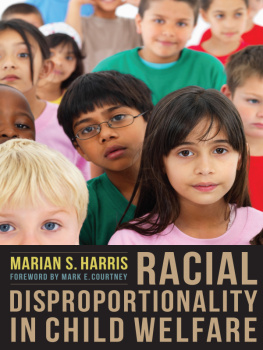

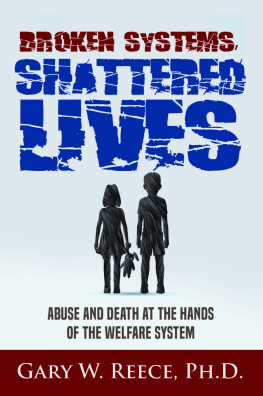
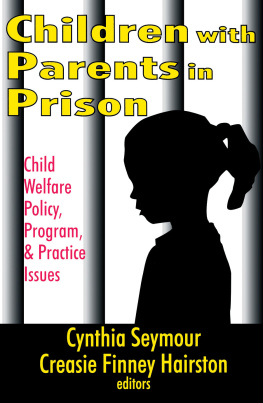
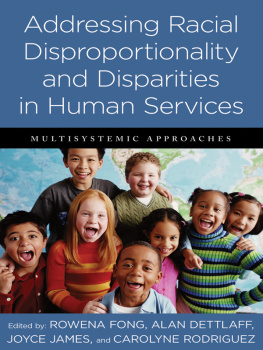
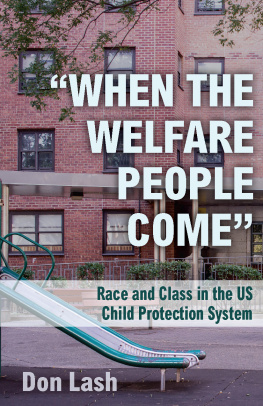
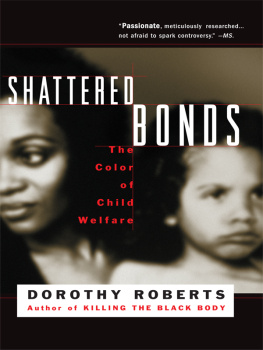
 COLUMBIA UNIVERSITY PRESS NEW YORK
COLUMBIA UNIVERSITY PRESS NEW YORK